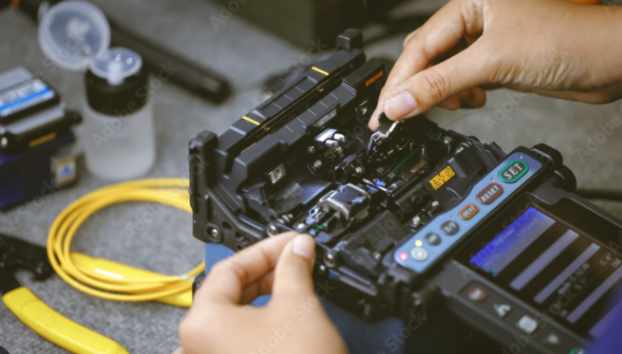Oufu Optical Fiber Cable Co.,Ltd
Address: Shenyang, Liaoning, China
Contact person: Manager Zhang
Phone: 400-964-1314
Mobile phone: +86 13904053308
【whatsapp && wechat】
2024-06-20 1680
Splicing Fiber Optic Cable: A Must-Read for Network Engineers & Technicians
In the fast-paced world of telecommunications, fiber optic cables play a pivotal role in ensuring the reliable and efficient transmission of data. As such, the art of splicing fiber optic cables has become an essential skill for network engineers and technicians. This article aims to provide a comprehensive overview of fiber optic cable splicing, highlighting its importance, challenges, and best practices for network professionals.
www.adsscable.cn

The Importance of Fiber Optic Cable Splicing
Fiber optic cables are the backbone of modern communication networks, carrying vast amounts of data at incredibly high speeds. Splicing, the process of joining two or more fiber optic cables together, is crucial for extending the reach of these cables and maintaining their integrity. Proper splicing ensures minimal signal loss, optimal performance, and long-term reliability of the network.
Challenges of Fiber Optic Cable Splicing
While fiber optic cable splicing is essential, it also presents a number of challenges. The fibers themselves are extremely thin and fragile, requiring utmost precision and care during the splicing process. Even the slightest misalignment or imperfection can lead to significant signal loss, affecting the overall performance of the network. Furthermore, the splicing process must be done in a clean and dust-free environment to prevent any contamination or damage to the fibers.
Best Practices for Fiber Optic Cable Splicing
To overcome these challenges and achieve successful splicing, network engineers and technicians must adhere to a few best practices:
Use Advanced Splicing Equipment: Investing in high-quality splicing equipment is crucial for achieving precision and accuracy. These advanced tools feature precise alignment mechanisms, automatic fusion cycles, and integrated monitoring systems to ensure successful splicing.
Train and Certify Technicians: Proper training and certification of technicians are essential for ensuring they possess the necessary skills and knowledge to splice fiber optic cables effectively. Training should cover fiber optic cable theory, splicing techniques, safety protocols, and best practices.
Maintain a Clean Environment: As mentioned earlier, the splicing process must be done in a clean and dust-free environment. Technicians should use cleanroom suits, gloves, and other protective gear to prevent any contamination or damage to the fibers.
Perform Quality Control Checks: After splicing, technicians should perform quality control checks to ensure the splice is of high quality and meets the required standards. This includes checking for any imperfections, misalignments, or other issues that could potentially affect the performance of the network.www.adsscable.cn
Keep Up with Industry Standards: The telecommunications industry is constantly evolving, and new splicing techniques and standards are being introduced regularly. Network engineers and technicians should stay updated with the latest developments and adhere to industry standards to ensure their splicing work is compliant and reliable.
In conclusion, splicing fiber optic cables is an essential skill for network engineers and technicians. By understanding the importance of splicing, adhering to best practices, and keeping up with industry standards, network professionals can ensure the smooth and reliable operation of modern communication networks.